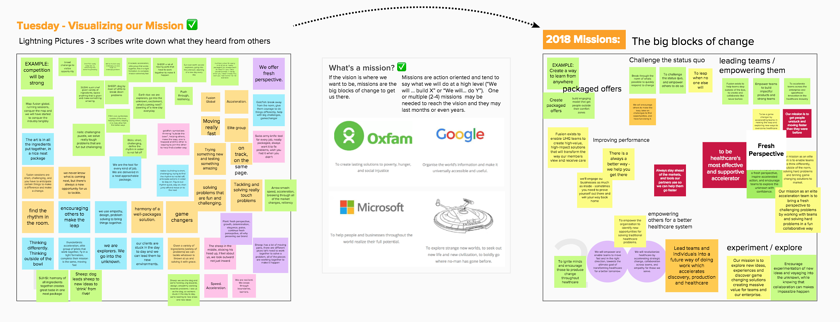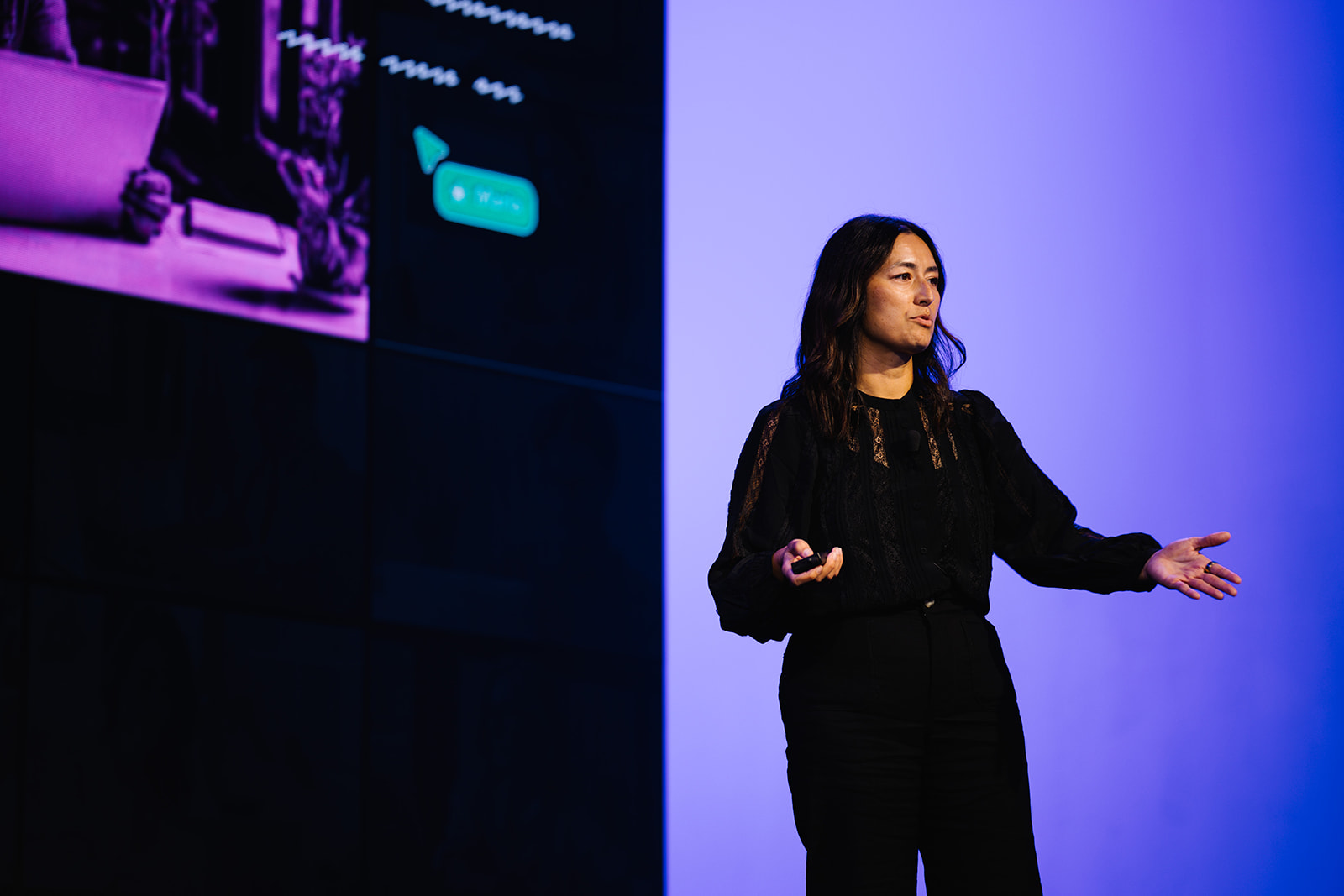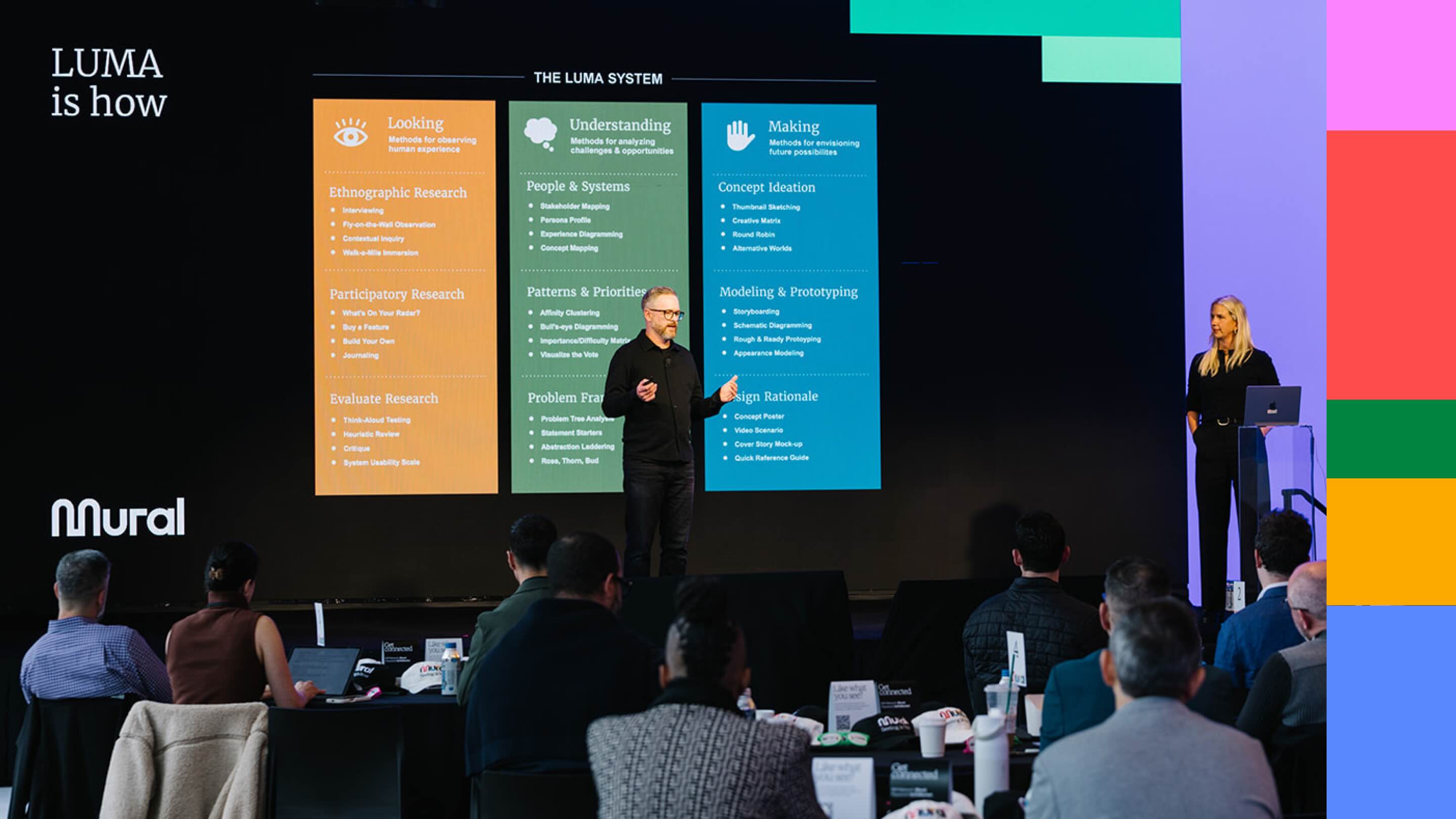Developing your team's strategy at the end of the year can feel a bit daunting, but it doesn't have to be.

By leveraging the expertise of your team in conjunction with time boxed frameworks pre-populated in Mural, you can have a lean, game changing strategy established in less than one week.
Over the course of five days and using only 2.5 total hours, Antonin Lapiche (Fusion Team Experience Designer) and myself lead our team in remote collaboration sessions to establish next year's team vision and put an actionable strategy in place for 2018. Our distributed team had a total of 17 participants working from Boston, MA and Raleigh, NC.
Antonin set the stage for our team by pre-populating some of our most impactful frameworks in the Fusion team mural. Small homework assignments were requested before each collaboration session to ensure all team members were primed for the day’s framework and ready for fast production. The time between days enabled reflection and synthesize.
Related: The definitive guide to incorporating meeting reflections into your team's meeting culture
Monday: Headlines & Planning Our Vision
Pre-Assignment: Sign into Mural and get familiar with the tool
Headlines Framework: This framework focuses on beginning with the end in mind. It asks a team to envision what a media publication would say about them after their strategic goals have been met. Headlines focuses teams to really think about the potential future impact during the planning phases of a strategy.
Armed with the Headlines Framework, our team worked through two scenarios:
- At the end of 2018, how would people answer the question – why does our team exist?
- If our team gets shut down in 2018, what would be the cause?

The collaboration and production around the headlines framework allowed us to begin to picture the 2018 vision. We rapidly ideated on the 2018 vision using the prompt “A place where…”
To wrap up Day 1, our team leveraged MURAL's voting capability; the top 3 ideas were used to solidify the 2018 vision.

Tuesday: Visualizing Our Mission
Pre-Assignment: Find an image that represents what our mission means to you.
Mission Building Framework: Team or company missions are action oriented statements that assert the team’s goals at a high-level. While a vision is the future of where a team wants to be, the mission is often how they’ll get there. Mission statements are essentially big blocks of change that bring us one step closer to our vision. A strong way to start crafting mission statements is by using the phrase “we will…”
Day two kicked off with lightning picture presentations; each team member chose an image that represented what the team’s mission meant to them. Three scribes were selected to capture the image descriptions in Mural. We prompted the team to review what the scribes had captured and then kicked off the next framework, building the 2018 mission.

Each team member was asked to take five minutes and craft one or two mission statements for 2018 inspired by the image descriptions they had just heard. After the mission statements were drafted, it was time to bubble up the common threads by theming ideas. We then voted, and the top three missions were carried forward.
Wednesday: SWOT Analysis & Focusing Our Strategies
Pre-Assignment: Do a SWOT analysis for Fusion
SWOT Analysis Framework: Leveraging a team SWOT Analysis template allows for holistic understanding and discussion around the team’s strengths, weaknesses, opportunities, and threats for the future.
In five minutes, each member of our team leveraged the pre-assignment to populate a holistic SWOT analysis for the entire Fusion team. After reviewing and discussing the SWOT, we switched focus to building out potential strategies to address some of the major opportunities for 2018. The strategy framework guided us to ideate around four specific areas that are crucial to our business. Again, voting took place and five focused key strategies were carried forward.

Thursday: Establishing Objectives & Key Results
Pre-Assignment: Create 1 OKR per strategy
Objectives & Key Results Framework: OKRs are a popular technique for setting goals and communicating results within a team or organization. By aligning objectives and 2-3 key results to specific strategies, you are better able to create alignment around execution and track measurable results.
On the fourth day, the we populated our OKR assignments against each of the five strategies that had been carried over. With one minute per strategy set on the clock, our team produced 36 OKRs in only five minutes. Silently, we worked together to theme the OKRs within each strategy, then used those themes to debrief the work that had been done that day.

Friday: Moving From Plans to Action
Pre-Assignment: Put your name next to an OKR you feel passionate about
Massive Action Plan (M.A.P.) Framework: The M.A.P. accelerates teams through rapid planning with a focus on execution. It uses specific timeframes, milestones, and self-appointed champions to build in accountability and ensure effective execution. Massive Action Plans are typically organized in one of two ways:
- A 30-60-90 day plan (i.e. quarterly planning)
- Now-Next-Future (long-term planning with less hard timelines)
For the final day of strategic planning, each member of our team came prepared with the strategies and OKRs they hope to contribute to in 2018. This led to extremely fast production when completing the Massive Action Plan. Again, we put one minute on the clock per OKR and our team built out high-level milestones and specific tasks that need to be completed within the first 30, 60, & 90 days of the quarter in order to achieve our objectives.

Acceleration
Traditionally, strategy planning is conducted in an ivory tower and with a limited set of people at an offsite, or worse it doesn't happen at all. MURAL enabled each member of our geographically distributed team to be on the same playing field contributing to our overall strategy and ultimately enhancing the outcome.













